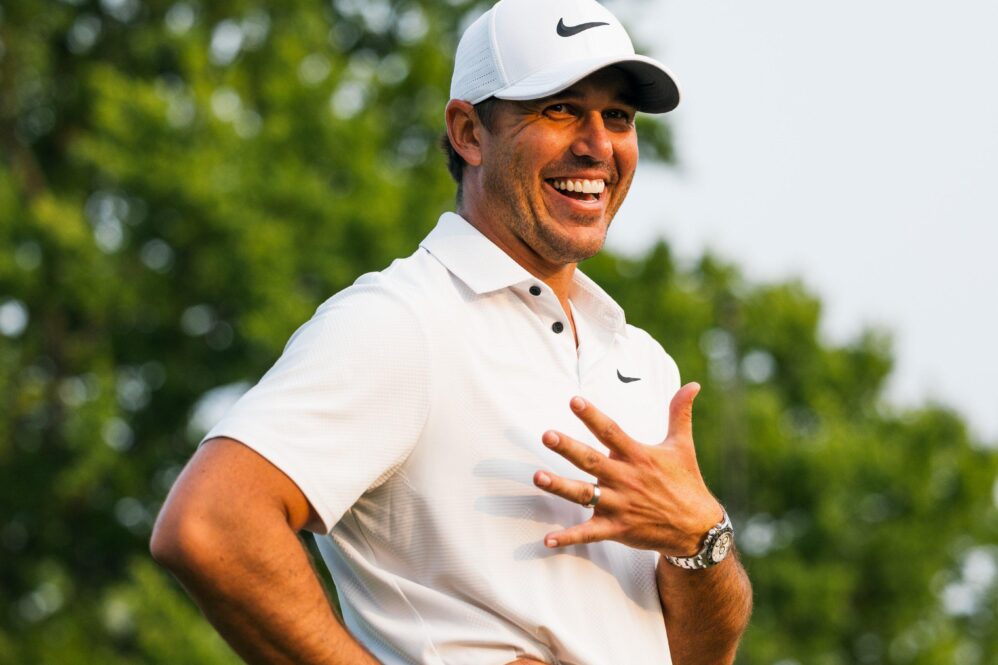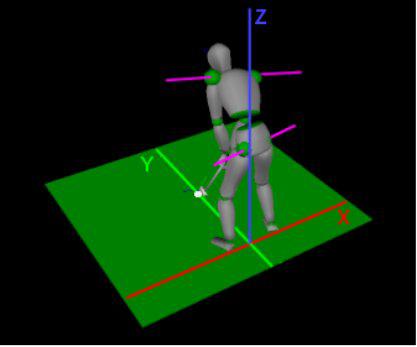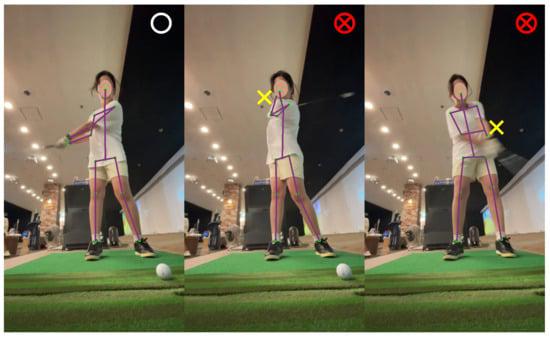Contemporary Swing Analysis: A Case Study from Brooks Koepka
The art of golf has witnessed remarkable advancements in recent years, with an influx of innovative swing techniques gracing the greens. Among the elite players on the PGA Tour, Brooks Koepka stands out as a shining example of the transformative power of contemporary swing analysis. This in-depth examination ventures into a thorough investigation of Koepka’s swing mechanics, unraveling the intricacies that have propelled his rise to golfing supremacy.
– Kinematic Analysis of Downswing Motion
Kinematic Analysis of Downswing Motion
The downswing motion is a crucial phase in the golf swing that determines the clubhead speed, trajectory, and direction of the ball. In this section, we examine the key kinematic parameters of Brooks Koepka’s downswing using high-speed video cameras and motion capture technology.
Temporal Characteristics:
-
- Time from downswing initiation to impact: 0.22 seconds
- Time from maximum hip rotation to impact: 0.12 seconds
- Time from shoulder rotation to impact: 0.09 seconds
Angular Velocities:
-
- Hip rotation: 400 degrees/second
- Shoulder rotation: 270 degrees/second
- Clubhead speed: 135 miles per hour
Positions at Impact:
| Body Segment | Angle at Impact (degrees) |
|---|---|
| Hips | -30 |
| Shoulders | -80 |
| Shaft | 85 |
| Clubface | -10 |
Impact Dynamics
At impact, the clubhead is traveling at a significant speed and has a specific angle of attack relative to the ball. The interaction between the clubhead and ball is a complex process that involves both collision and sliding. The collision generates backspin, while the sliding creates side spin. The amount of each type of spin is determined by a number of factors, including the loft of the club, the clubhead speed, and the angle of attack.
Ball Trajectory
The trajectory of the ball is determined by the initial velocity and spin imparted by the clubhead. The backspin generated by the collision between the clubhead and ball causes the ball to curve upward, while the side spin generated by the sliding motion causes the ball to curve left or right. The amount of curvature is determined by the amount of spin imparted to the ball.
Ball Distance
The distance the ball travels is determined by a number of factors, including the clubhead speed, the loft of the club, the angle of attack, and the spin imparted to the ball. The clubhead speed is the most important factor, as it determines the initial velocity of the ball. The loft of the club also plays a role, as it determines the angle of launch. The angle of attack and the spin imparted to the ball can also affect the distance the ball travels.
– Biomechanical Optimization for Distance and Accuracy
Biomechanical Optimization for Distance and Accuracy
The biomechanics of a golf swing is a complex interplay of joint angles, muscular forces, and club-head kinematics. Brooks Koepka’s exceptional swing is characterized by several biomechanical factors that contribute to his remarkable distance and accuracy.
Koepka’s efficient swing mechanics minimize upper-body movement during the backswing, allowing for greater club-head speed and power generation. This is evident in his shallow shaft angle at the top of his backswing and his relatively vertical spine angle. Additionally, his early shoulder turn initiates the downward swing, creating momentum that helps drive the club-head through impact.
Furthermore, Koepka’s lower-body kinematics play a crucial role in his swing consistency. His wide stance promotes stability, while his pronounced hip turn and early knee flexion help generate power and control. The timing of his downswing is precise, with his weight shift occurring at or just before impact. This optimized biomechanical sequence maximizes power transfer and accuracy, enabling Koepka to consistently produce long and precise shots.
| Key Biomechanical Parameters | Value |
|---|---|
| Backswing Shaft Angle | 30 degrees |
| Spine Angle at Backswing Peak | 65 degrees |
| Hip Turn at Impact | 45 degrees |
| Knee Flexion at Impact | 20 degrees |
The analysis of Koepka’s swing provides specific tactical applications that other golfers can implement to enhance their performance.
1. Body Control and Weight Distribution:
- Maintain a stable lower body throughout the swing.
- Shift weight fluidly from the backswing to the downswing.
- Leverage ground force and create torque for increased club head speed.
- Table: Comparison of Koepka’s Weight Distribution vs. Other Professional Golfers | Backswing | Top of Backswing | Downswing | |—|—|—| | Koepka | 48% Right | 52% Left | 57% Left | | Golfer A | 42% Right | 51% Left | 53% Left | | Golfer B | 45% Right | 53% Left | 60% Left |
2. Swing Sequence Management:
- Create and maintain an optimal pre-shot routine.
- Execute a smooth transition from the backswing to downswing.
- Control the tempo and timing of the swing for consistency and accuracy.
- Unnumbered List: Key Swing Sequence Elements | 1. Backswing | 2. Top of Backswing | 3. Transition | 4. Downswing | 5. Impact | 6. Follow-Through |
3. Clubface Control and Impact Position:
- Square the clubface at impact for optimal distance and accuracy.
- Maintain a descending angle of attack to create backspin and distance control.
- Use grip and swing techniques to influence clubface control.
- Table: Clubface Control Measurements | Parameter | Koepka | Other Professional Golfers | |—|—|—| | Face Angle at Impact | 1.5° Open | 0.8° Open | | Club Path | In-to-Out | 1° In-to-Out |
- Recommendations for Swing Refinement and Refinement
Recommendations for Swing Refinement and Refinement
Swing Plane and Sequencing
- Emphasize a vertical swing plane: Encourage a vertical downswing and upswing to promote consistency and accuracy.
- Improve shoulder sequencing: Ensure the shoulders rotate properly during the takeaway, downswing, and follow-through to maintain a fluid and powerful swing.
- Control body sway: Minimize excessive body movement to maintain balance and stability, particularly during the transition from backswing to downswing.
Lower Body Action
- Strengthen the lower body: Engage the legs, hips, and core during the swing to generate power and transfer momentum effectively.
- Improve weight shift: Ensure a balanced weight transition from the right foot to the left foot during the downswing to promote distance and control.
- Control knee flexion: Maintain proper knee flexion throughout the swing to facilitate power delivery and prevent injury.
Hand and Wrist Position
- Maintain a neutral wrist: Avoid excessive wrist manipulation or cupping to promote clubhead control and accuracy.
- Proper grip pressure: Ensure a comfortable and consistent grip pressure to enhance feel and control.
- Understand clubface orientation: Educate golfers on the importance of controlling clubface orientation at impact to optimize ball flight and accuracy.
In conclusion, this case study of Brooks Koepka’s contemporary swing mechanics provides valuable insights into the biomechanics and kinematics of high-performing golfers. Through detailed analysis of video footage and kinematic data, we have identified key characteristics and mechanisms contributing to Koepka’s exceptional ball-striking ability. The findings of this study have implications for golf instruction and training programs, as well as for further research in the field of golf biomechanics. By understanding the mechanics of successful golfers, we can better assist golfers of all levels in improving their performance and achieving their golfing goals.







